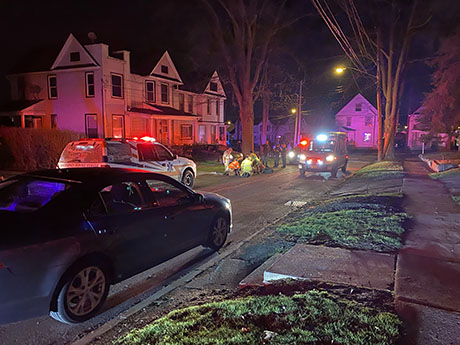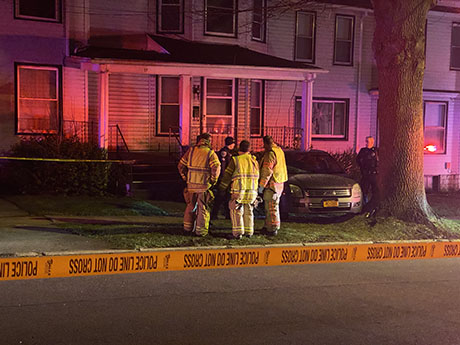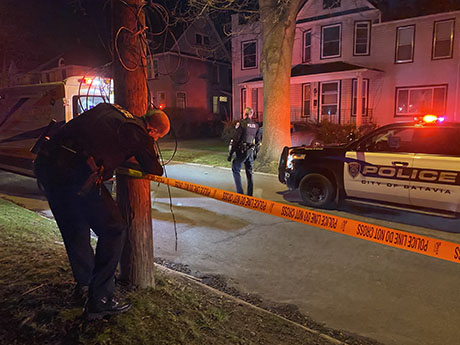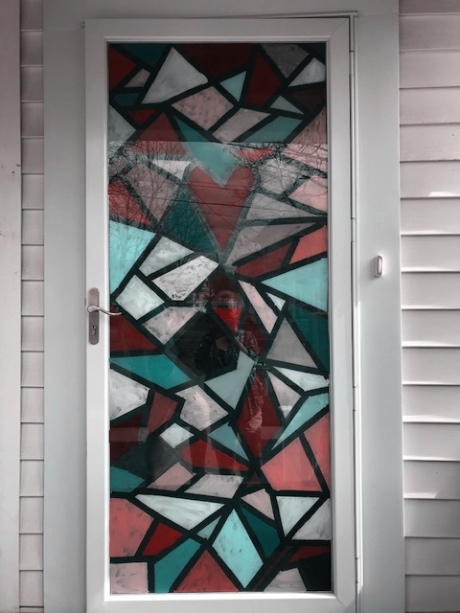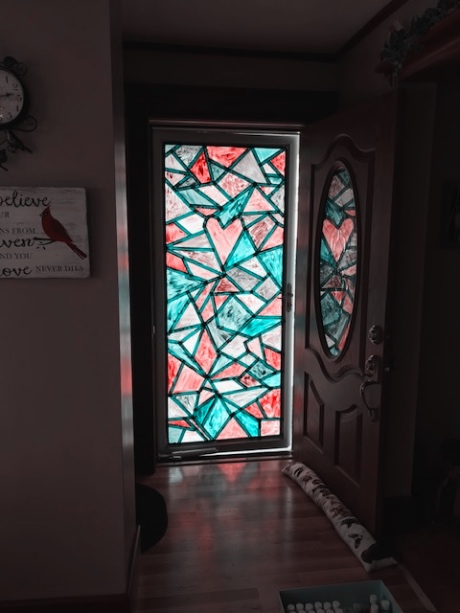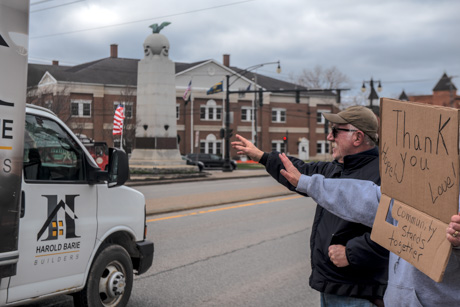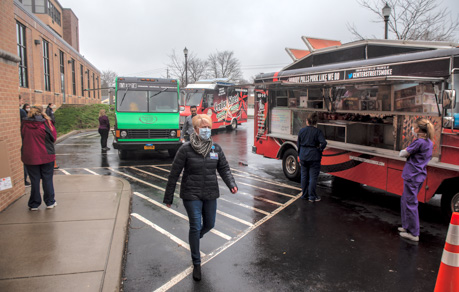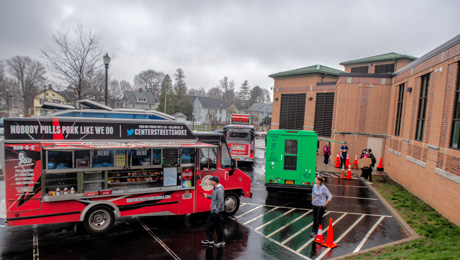Word that Albany has restored Video Lottery Terminal money generated by Batavia Downs Gaming is good news to Genesee County municipalities, but a couple of other stipulations in Gov. Andrew Cuomo’s 2020-21 budget likely will result in increased financial stress beyond the uncertainty created by the COVID-19 pandemic.
Assemblyman Stephen M. Hawley confirmed today that the state budget includes the restoration of VLT funds to Genesee County ($200,392), Town of Batavia ($160,388) and City of Batavia ($440,789).
Lawmakers of the three entities previously were advised – late in their budget processes -- that VLT money would no longer be available, and that left sizeable gaps in their budgets. In the case of the City of Batavia, there was a $700,000 shortfall, causing City Council to pass a budget that includes a $7.48 percent property tax increase.
Hawley said getting the VLT money back into local hands is one of the few bright spots of the state budget.
“I worked very hard on that to get it restored from the governor’s proposed cutting,” said Hawley, who is in his 15th year as a state legislator. “Last year, he proposed cutting a percentage of it to the city, the town and the county, and this year he took the total ax to it in his executive budget. But we were able to get that restored in its entirety and that will be of great help.”
While the state could hold the VLT money depending upon revenues and expenditures during this fiscal year, Hawley and County Manager Jay Gsell believe that the local municipalities are safe for the time being.
“Technically, the governor does have the ability to withhold funds from any entity, but hopefully that won't be the case here," Hawley said. "You never know what the governor or legislature will do with the state budget, but this restores it for this year. Each January when the governor comes up with his budget, it seems to be a favorite chopping block for him. That’s why they can’t necessarily count on it from year to year.”
Gsell said it was his understanding that the VLT funding was voted on as a separate appropriation, a line item not subject to the governor’s power to incrementally reduce aid reimbursements to local governments and others, including school districts, based on revenue streams.
“We got a summary from NYSAC (New York State Association of Counties) of all the good, bad and indifferent, and VLT funding was one of the things that in the last two weeks of the budget deliberation -- before the three people in the room made the decision – that would be voted on as part of the full package,” Gsell said. “And that’s exactly what happened.”
'Unilateral power' designation raises eyebrows
The county manager said he’s a bit wary over the legislature’s granting of “somewhat unilateral power” to the governor, calling it “unchartered territory as far as local governments are concerned.”
Hawley said he voted “no” to every budget bill for the first time ever, pointing to a flawed process and the decision to give Cuomo more authority.
“For many, many, many reasons I voted for the first time ever “no” on every single budget bill, even though there were things in there like restoration of CHIPs funding (Consolidated Highway Improvement Program), extreme winter recovery, sales tax renewals for the counties I represent,” Hawley said. “Every bill always has good stuff and bad stuff in it, you just have to decide what the general impact is, but because of the way this was done and the way it was held off until the very last minute without appropriate legislative review, I had a huge problem with it.”
He said he was in favor of a “continuing resolution” that would have allowed the state to continue operating and then have the legislature return to Albany when the pandemic was under control.
“Additionally, we would have some sort of -- because this will affect us for years and years to come -- idea what the revenues actually will be and what the expenses may be and then we will be able to approach it with some knowledge,” he said.
Hawley said the “made-up figures were really catastrophic and not an appropriate way to run the state or any business.”
“How do you make up numbers when you have no idea? I thought we could have averted all of this – bringing all 213 legislators back into the buildings -- who knows who brought what with them in terms of this disease. And then we ceded power to the governor to make any changes that he wants to as the budget goes on as opposed to having legislative input on that … that’s not what the election process is all about in a democracy.”
City to use VLT funds to offset costs
City Council President Eugene Jankowski weighed in on the new VLT development, stating that he expects the restored funds to be used to offset some of the spending cuts in this year’s budget and the loss of sales tax revenue caused by the coronavirus shutdown.
“It’s too late to change anything in our 2020-21 budget,” he said. “Since it’s already been passed, we can’t do anything about the tax rate. But it’s great that we will have it to use next year.”
Gsell said having the $200,000 certainly helps the county, which has put its capital projects – including the construction of a new jail – on hold as it calculates the impact of COVID-19.
He is troubled, however, by Cuomo’s creation of a fund to skim county sales tax revenue to support “distressed hospitals and nursing homes” and continuation of a program to use county sales tax money to assist other municipalities.
“I guess you could say it’s a double-edged sword,” Gsell said. “The governor and the comptroller are establishing a $250 million fund over the next two years to help finance distressed hospitals and nursing homes, and we could be hit for about $250,000 in the first year,” Gsell said. “Previously, this had strictly been a state commitment in that regard.”
Gsell: 'Taxation without representation'
Noting that he has no idea whether United Memorial Medical Center or the local half-dozen long-term care facilities would be targeted for assistance, Gsell said this “assessment” is putting Genesee County back into a deficit funding situation – something it removed itself from when it sold the County Nursing Home three years ago.
He also bemoaned the fact that the state, for the second year, will be taking county sales tax to distribute as part of the AIM (Aid and Incentives for Municipalities) program.
“Again, in the past the state fully funded this out of their own coffers,” Gsell said. “They use a formula -- I believe it’s about a 2 percent equation in there – and last year, we saw $320,000 of county sales tax intercepted by the state so they could make those payments to the villages and towns and, in some cases, the city. This year, it could be another $250,000 hit to county sales tax before we even get the standard distribution that they’ll provide. This is taxation without representation. We had no input into how this fund was set up or what the calculation of the formula is.”
Gsell said the county “dodged a bullet” in regard to increased Medicaid funding as the governor’s proposal to remove the cap of local shares was not included in the budget.
“He had a three-pronged proposal that could have significantly changed how much we are paying on a weekly share on our present $9.6 million a year that we’re already committed to sending to the state,” he said.

